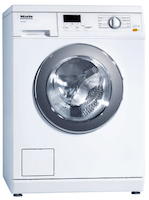Why not give us a call.
0800 0853 573
In the modern world of environmental awareness and corporate social responsibility it is worth giving consideration to your carbon footprint. If your business operations include the use of laundry equipment it is likely that this activity is a key contributor to CO2 emissions and hence your carbon footprint. Apart from the warm glow that you will get from knowing that you have done your bit for the environment cutting down your carbon footprint will cut down your energy consumption which will be financially beneficial in a climate of ever increasing energy prices.
The generation of heat is a key producer of CO2 so in a typical laundry cycle it is the drying that accounts for the vast majority of the emissions, approximately three quarters of the carbon footprint belonging to the drying of laundry with the remaining quarter belonging to the washing part of the laundry process. So lets start by looking at ways we can reduce the carbon footprint due to drying laundry. As you may know from your home if you have ever watched the electricity meter speed up when electrical equipment that produces heat is switched on, heating with electricity is costly both financially and for the environment. That is why many of us opt to use gas to heat our homes. So why not use gas which is a more efficient fuel for the generation of heat to generate the heat required for the drying of laundry? In a commercial laundry it is a very realistic option with the added complication of a gas installation being more than outweighed by the savings. Many commercial dryers are available in a gas powered version.
Of course heat is not the only way to dry laundry, spinning washed laundry well can remove much of the water and spinning is far more efficient than heating. Selection of a commercial washer that offers a high spin speed can make savings before your laundry even reaches the dryer.
As we have already discussed the generation of heat is a key contributing factor to the carbon footprint of a load of laundry and a washing machine needs to generate heat, to heat the water used in the washing cycle. With modern laundry detergents it is possible to wash at lower temperatures and still achieve the same quality results in your laundering operation. The use of a dosing system will ensure that you use just the right amount of detergent in your wash which although not reducing your carbon footprint it does help protect the environment by minimising the detergents effect on water pollution.
When selecting your commercial laundry equipment it is also worth considering that like many other aspects of your business their are economies of scale to take advantage of. A single large load is more efficient and thus better for your carbon footprint than several smaller loads, it will also save you time. If you are unsure of what size equipment you need to meet your laundry requirements in the most efficient and environmentally friendly way consult a skilled laundry design service.
So far we have considered your choice and use of laundry equipment, but what about the equipment itself? As with all manufactured goods their production, materials and transportation introduce a carbon footprint into the items before you even use them. You can not reduce this total footprint but you can spread it over the maximum number of laundry cycles possible to reduce your per cycle footprint. It is important to select good quality reliable equipment and then ensure that it is installed and serviced correctly to maximise its lifespan. Well maintained laundry equipment is also more efficient in operation, reducing your costs and carbon footprint even further.
Next time you think about your laundry don’t just consider how white your whites are but consider how green they are.
